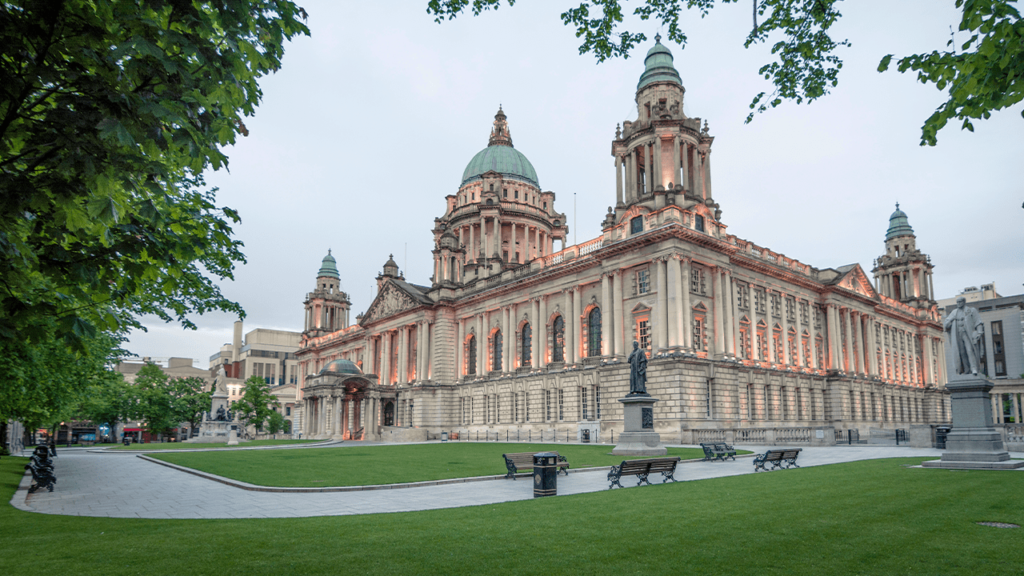
Moving to… Belfast
They say Belfast has some ‘good craic’, but what’s it really like to call home? For starters, it’s rich with culture and history, has a booming culinary scene and is becoming increasingly important for music and the arts. Here, we’re taking a deeper dive into Belfast to bring you everything there is to know about moving to Northern Ireland’s capital.
A brief history of Belfast
Belfast’s history is linked to the violence brought on by the partition of Ireland, especially during the more recent conflict referred to as the Troubles. Before these issues, it was a major port city and played an integral role in the Industrial Revolution. Since the Troubles and the subsequent peace brought on by The Good Friday Agreement, Belfast has become a vibrant city bursting with flair, artistry and friendly locals.
Where is Belfast?
Located in the United Kingdom, Belfast is the capital of Northern Ireland and its largest city. It stands on the banks of the River Lagan on the east coast and is the 12th-largest city in the UK.
Moving to Belfast
Compared to other large cities in the UK, Belfast is surprisingly affordable. Housing prices, in particular, are much lower than the UK average. There are homes in the city centre for people who want to live close to the action, while the suburbs provide a peaceful escape from the hustle and bustle.
Buying in Belfast
The average house value in Belfast is £159,386. Expect to pay an average of £343,413 for a detached home, £131,162 for a terraced house and £133,559 for an apartment. Belfast property prices are significantly lower than the UK national average of £251,000. In fact, it’s one of the most affordable places to buy alone. Over the last five years, house prices have increased by 10% and by 36% in the last 10 years.
There’s a varied selection of estate and letting agents in Belfast, with chain and independent options available to help you find a home.
Renting in Belfast
One-bedroom homes rent for an average of £675 per month in Belfast, with two-bedroom properties fetching in the region of £750 per month. For larger homes, expect to pay an average of £900 per month.

Cost of living
If you’re moving to Belfast, you can expect to pay lower prices than the UK national average when it comes to everyday living. A meal for one person is around £11, while a cappuccino is about £2.75 and a pint of milk is £0.90p.
Utility bills are much lower in Belfast, with the average price around 74 per month for electricity, heating, cooling, water and waste disposal (UK average £155). Broadband is about £32 per month.
Life in Belfast
Open spaces
Belfast might be a capital city, but there’s plenty of sprawling countryside and coastlines nearby. Go on hikes and walks at Cave Hill Country Park, or visit the famous Giant Causeway with its grand coastline, where you can enjoy beaches and walking trails.
Transport links
Northern Ireland’s capital is relatively compact, which means it’s easy to get around. Public transport is managed by Translink and features a local bus service and trains going to other parts of Northern Ireland and Dublin. There’s also an international airport.
Shopping
Belfast is known for its award-winning markets, with St George’s Market the last-standing covered Victorian market in the city. There are also large shopping outlets, such as Victoria Square, dotted throughout the city, as well as boutique options in neighbourhoods like Queen’s Quarter.
Eateries
It’s hard to beat the seafood on offer in Belfast, with plenty of ‘catch of the day’ menus ready to make your mouth water. Of course, there’s cuisine to meet all taste buds, with Darcy’s Belfast a popular restaurant featuring fish, meat and vegetarian dishes, plus a cocktail menu. In 2019, Belfast was given a Gold Award for best foodie destination of the year by World Travel Market.
Nightlife
Belfast has a growing reputation for its nightlife, with spots like Thompsons Garage offering a high-energy club with DJs and a terrace. There are also plenty of traditional Irish pubs and bars located all around Belfast.
Art & culture
Head to Titanic Belfast, a leading tourist attraction and exhibition space where the Titanic was designed, built and launched. Another popular landmark is the Ulster Museum, which is home to Northern Ireland’s collection of art and features history and natural sciences.
Things to do
Belfast Castle is a popular tourist spot offering visitors a majestic 19th-century Scottish Baronial style castle. You can take in sweeping views of the city, visit archaeological sites and go on walking routes.
What’s not to like?
As far as cities go, Belfast is on the smaller side, which might not appeal to anyone looking to move to a large city with 24-7 entertainment.
Who lives there?
Belfast has a population of more than 280,000 and a median age of 35.
Typical broadband speeds
The average broadband speed is 64mbps in Belfast, which is essentially the same as the UK national average of 67mbps.
Crime rates
The overall crime rate in Belfast averages around 91 crimes per 1,000 people.
Thinking of moving to Belfast?
Get a rounded opinion about the homes in Belfast with Move iQ’s property report, which provides an in-depth analysis of specific properties as well as details about the local area of Belfast.
Last Updated: November 20th, 2024







